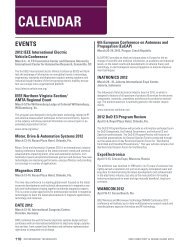2011 EMC Directory & Design Guide - Interference Technology
2011 EMC Directory & Design Guide - Interference Technology
2011 EMC Directory & Design Guide - Interference Technology
Create successful ePaper yourself
Turn your PDF publications into a flip-book with our unique Google optimized e-Paper software.
surge & transients<br />
A Risk A s s e s s m e n t f o r L i g h t ning Prote c t i o n S y s t e m<br />
A Risk Assessment for Lightning<br />
Protection System (LPS)<br />
Bryan Cole<br />
Figure 1. Power quality pyramid.<br />
<strong>Technology</strong> Research Council<br />
Nichols, New York USA<br />
Many articles, papers, and standards<br />
have been written and/or developed<br />
documenting proper application<br />
of surge protection devices (SPDs),<br />
identification of SPD performance characteristics,<br />
proper SPD safety requirements,<br />
etc. However, there are minimal articles on<br />
describing when an engineer should specify<br />
SPDs to be applied to an electrical distribution<br />
system.<br />
SPDs are installed to protect against<br />
transient overvoltage and overcurrents from<br />
affecting the electrical systems and processes<br />
within a facility. Transients occur from<br />
environmental and human factors. Protection<br />
of the facility, the electrical system and<br />
the processes contained within the facility<br />
are the second most important item to be<br />
considered in the power quality pyramid;<br />
preceded only by grounding and bonding<br />
for the safety of personnel (Figure 1).<br />
There are numerous environmental<br />
causes that can disrupt the facility, the electrical<br />
system, or the processes within the<br />
structure. These factors include hurricanes,<br />
tornados, floods, lightning, etc.<br />
Transients from environmental causes<br />
include those from direct and indirect<br />
lightning strikes. To protect a facility from<br />
lightning induced transients, a lightning<br />
protection system is needed. When protecting<br />
a structure from direct lightning strikes,<br />
standards require that SPDs be installed<br />
whenever a lightning protection system is<br />
installed [1].<br />
In the design of an optional, legally<br />
required standby, or emergency power<br />
system, a risk assessment of the interaction<br />
between environment and human factors is<br />
not mandated by the National Electric Code<br />
(NEC) [2]. In the design of a critical operating<br />
power system, the NEC requires that a<br />
risk assessment be conducted [2]. Even if<br />
not required by the NEC, a risk assessment<br />
of environment and human factors for all<br />
power systems should be considered in the<br />
design or redesign of every facility.<br />
There are many factors to be considered<br />
in the risk assessment. Lightning risk assessments<br />
are described in US and international<br />
standards [2,3]. This article will<br />
focus on a risk assessment to determine<br />
if a lightning protection system and SPDs<br />
should be installed using the National Fire<br />
Protection Association standard on Lightning<br />
Protection Systems, NFPA 780. Annex<br />
L of NFPA 780 describes methods for simplistic<br />
and complex risk assessment. This<br />
article focuses on a simple risk assessment.<br />
LIGHTNING RISK ASSESSMENT<br />
Performing a risk assessment to determine<br />
if the facility needs a lightning protection<br />
100 interference technology emc <strong>Directory</strong> & design guide <strong>2011</strong>




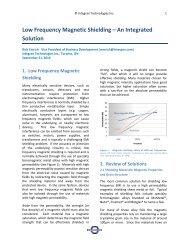

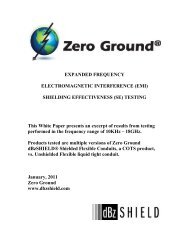
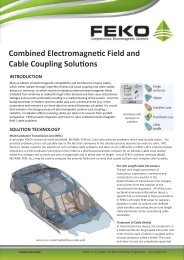



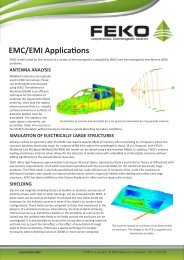
![[ thursday ] morning sessions 8:30 am-noon - Interference Technology](https://img.yumpu.com/23176841/1/190x247/-thursday-morning-sessions-830-am-noon-interference-technology.jpg?quality=85)
